The Trump Endorsement

Looking at what’s left of the Republican field it occurs to me that, you know what, why wouldn’t Donald Trump be my choice for the nomination? I mean, as someone who hopes that the Democratic candidate wins, he strikes me as the most beatable? And even if bad things happen and the Republicans pull this one out, is it at all possible that Trump would somehow be worse than Rubio or Cruz? Look, I say a lot of stupid shit for effect — sometimes just to see how it sounds! I know what it’s like to shout out something you don’t mean just because you know it’ll get a reaction. Is Donald Trump racist and will be he terrible about immigration? Maybe. If you take him at his word, sure. But what would a Cruz or Rubio administration do differently? Trump at least wouldn’t be beholden to the party whose ticket he is running on. You think he gives a shit about abortion or the gays or any other social issue, really? Isn’t it an even chance that Donald Trump might be responsible for a couple of abortions? The fuck does he care? He’ll probably get distracted or bored! Okay, but what about starting a bunch of dumb wars with his big mouth? It’s possible, I guess. Let me ask you: Do you think the other guys won’t start them with their pretty little ones? I mean, yes, it’s probably bad to be like, “Well, this guy is full of shit, so at least the possible upside is that he won’t be the total nightmare that the other two will certainly be because he doesn’t mean it.” But where we’re at at the moment I have to believe that this is the best choice we’ve got. And if the worst case scenario comes to pass, and he actually follows through on whatever it is he’s said, the end of the world is going to be a lot zippier and filled with humor than the way the rest of the field would manage to bring it about. So, yeah, sure, why not, let’s have Donald Trump as the GOP nominee. I fully support that. And I’m proud that New Jersey governor Chris Christie agrees with me. Now I know for sure I’m on the right side. What an amazing age in which we live, for however much longer that continues to be the case.
Who Stole My Tires?

I recently had my tires rotated, a service that was provided free by the garage where I purchased the treads a year earlier. When the mechanic took a look, the news was not good: The tires apparently were bald, not a brand the garage even sold, and if I hoped to navigate through the ice and snow, it was imperative that I purchase new tires that day. “We didn’t sell you those,” the mechanic said. “Someone switched them out. Don’t you look at your tires?”
My situation had already spread among the mechanics, many stopping work to get a look at the jackass who did not regularly run his fingers over the rubber ridges on which he was about to rest his family’s lives for the hundreds of miles of terror known as a holiday vacation. The garage pulled the paperwork to prove that they sold me a different brand than the bald tires on which I’d rolled in, quickly asserting their innocence in the matter. Someone had swapped out my tires.
My suspicion initially landed on the New York City parking facility where I rented space six months earlier, before it closed. A parking attendant there was a bit too friendly, a bit too eager to park my car in the “special section” of the garage, the basement, right next to his. It so happened we had the same vehicle — same make, model, even color — and he once commented on my new tires. He would have had access to the garage late at night, once it closed, and could have easily made the switch. I contacted the management company with this investigative feedback, only to be told I was incorrect. I was passed off to a regional director, who suggested that accusing them of theft was serious business and threatened to get lawyers involved. I was instructed to fill out a vehicle incident report and file it with the claims office, which ultimately denied my grievance for lack of evidence.
My insurance company was even less interested in hearing about the “whodunnit” and more interested in blaming me. Did I have receipts of the old and new tires? Could I upload the receipts and photos of the purported bald wheels to the website? A claims adjustor had to inspect the car to ensure I was not lying to get my insurer to pay for new tires, which was more common than I thought. My insurer notified my new parking garage of its implication. “I know my guys,” the determined manager said upon hearing an insurance adjustor was on the way. “We didn’t steal nothing. Don’t you look at your tires?”
It was a question I heard from all parties — my father, mechanics, garage attendants, even my wife. The truth is I don’t look at my tires. I parked in what I believed to be a secure location, regularly checking the pressure and rotating the tires to ensure that my wife and sons had a safe, all-traction ride. The tires were stolen from a vehicle with two children’s safety seats in clear view in the rear, which in my estimate was grounds for a full-blown criminal investigation until the guilty parties were relieved of their wrenches. Instead of cooperation in my probe, I was another bumbling, insured car owner up against a system of corporate parking garages and insurance bureaucracy, all of which preferred my acquiescence to uncovering the truth of what happened.
Data from the National Insurance Crime Bureau show that car thefts are declining in the U.S., even as organized crime syndicates are stealing tires and rims. The Insurance Journal reports that thieves are “targeting newer vehicles parked in neighborhoods, in parking lots, even at dealer lots — anywhere they can quickly jack the car up, remove the wheels, and leave it sitting on blocks.”
When it comes to the treads, there’s an entire underground economy with which car owners are unintentionally duplicitous. It’s a lucrative scheme for everyone involved: The culprits steal the tires and sell them to collision repair shops for hundreds of dollars; the repair shop doubles the price and bills a new customer or insurance company, which quietly passes the fees off to clients; and insurance companies take care of the victim. In between there is a bunch of paperwork and suspicious accusations and an entire claims adjustment industry paid to investigate whether a theft actually occurred, though it is not expected to solve it. Eventually the whole system fumbles toward the next set of wheels.
I’m not the first person to fall victim to the tire racket. Months earlier, my wife’s friend returned from dinner to four wobbly, bald wheels. My insurance representative recounted an acquaintance, somewhere in the wilds of Minnesota, who had also reported stolen tires. As strange as it sounds, in some small, dismembered sense of fairness, it was preferable that my misfortune was due to a bicoastal, all-terrain crime syndicate, the Gambinos and Bonannos and Corleones rolled into one.
And yet — what kind of incompetent mafia had plundered my Rav4 but left behind an unused spare tire? Any well-organized mob, driving around a city in the middle of the night doing mob things, would certainly have use for a spare in case a pothole, or a bullet, resulted in a flat. Didn’t they realize if I was stupid enough not to notice four bald tires, then it would be months before I got around to removing the spare cover on the back to find an additional theft? In the mob stories I’ve watched, they always take the essentials from the crime scene. “Leave the gun,” Clemenza says in The Godfather. “Take the cannoli.” Or the way Christopher and Tony encountered bikers lifting cases of wine in a Sopranos’ episode, enduring a shootout to ensure they did not leave behind even a few cases of red. “Leave the kids’ seats and the Dave Matthews CDs,” a wise guy mechanic would have said. “Take the spare.”
More than likely, my tire theft was less exciting. I was likely duped by the parking attendant, a fellow Rav4 owner, before my garage closed last May. If that’s the culprit, then I unwittingly drove several thousand miles over the summer and autumn with my family in the car without so much as a faulty skid. That implies that whoever stole my tires took the time to carefully tighten every derelict bolt, properly inflate each bald tire, perhaps giving the vehicle a hasty inspection in the darkened crime scene before vanishing to sell my property in the underground economy beneath our cities. If nothing else, I’m thankful for the proficient service.
Photo by Mike Krzeszak
Warren Raww, "Ross"
It’s usually at the beginning of the week where I’m like, “Let’s be very still and hope no one notices us so we can ease into the next horrible five days,” but this morning I very much feel like being still and hoping no one notices us is the right move to slink out of the whole waking nightmare. The only good thing I can tell you about today is that eventually it will be over, so let’s just keep our heads down and let the lo-fi house grooves of Warren Raww help us run out the clock to freedom. Good luck, I’ll see you on the other side.
New York City, February 24, 2016

★ A windblown stinging rain made a persuasive case for telecommuting. Fog ate the scenery. The ceiling of clouds or mist was blankly even-looking, its irregularities only visible by which buildings it lopped off and which it left alone. “I took a gigantic step over a gigantic puddle,” the four-year-old announced. It was always raining less or more than it had just been raining. A teen in a pink hoodie pivoted her sneakers this way and that on a wet metal grate, making them squeak. On the way to dinner, it was much warmer than it had been at school pickup three hours before. By bedtime it was warmer still. Lightning flashed in the west and the building moaned, but the brunt of the storms would go somewhere else.
The Neighborhood That Nazis Built
by Brendan O’Connor
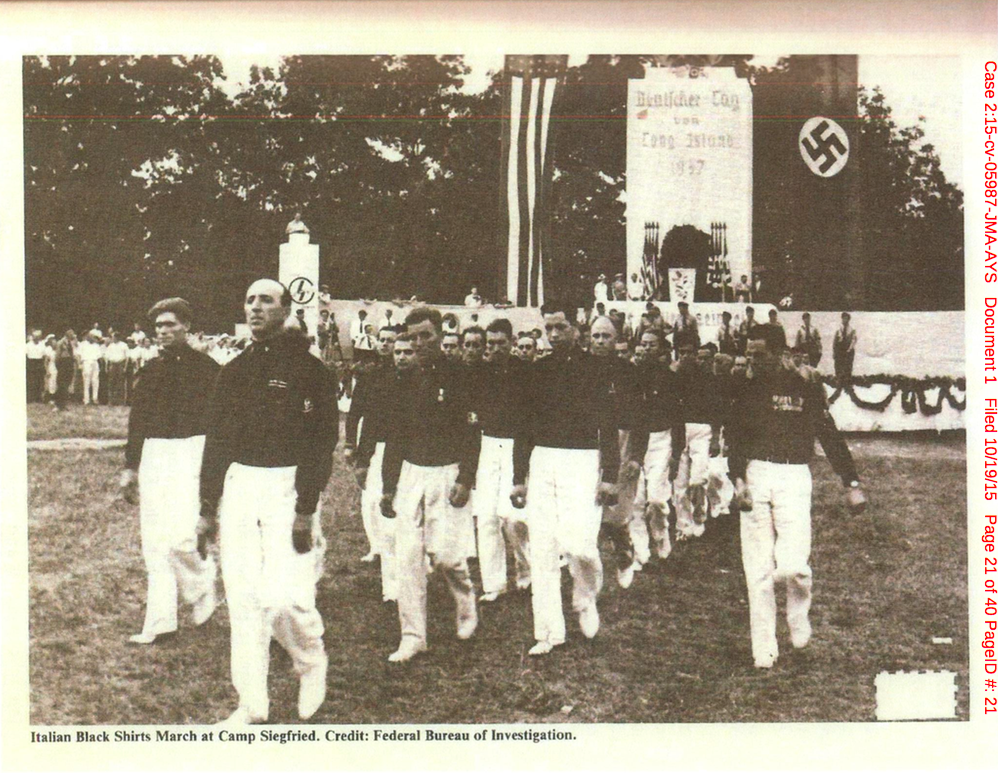
About sixty-five miles east of New York City, in the southern part of the Long Island town of Brookhaven, there is a hamlet of around six thousand people called Yaphank. In Yaphank, there is a residential community called Siegfried Park, where the land is owned by a non-profit group called the German-American Settlement League. Siegfried Park was originally owned by the German-American Bund, an American organization that supported the Nazis. The Bund operated Siegfried Park as a summer camp, beginning in 1935. In 1937, the land was transferred to the recently-incorporated GASL, which received funding from the Bund party until 1940, and which, in its Articles of Incorporation, stated that its purpose was to “introduce, cultivate, and propagate in every direction true Germanic culture [and]…the German language, customs and ideals.” In 1938, the camp’s manager, Henry Hauck, told the Mid-Island Mail that membership was open to all members of the German-American Bund, as well as all other “national-minded American citizens of Aryan blood.” A forty-acre residential subdivision included streets named for Goering, Goebels, and Hitler. Hauck said that the camp was non-political, although its members were vigorously anti-Communist. “Are the camp members and visitors supporters of Nazi ideas?” the Mail reporter asked. “Generally speaking, yes,” Hauck said. “But only as they concern Germany, not the United States.”
@nytimes Yaphank, LI’s 2015 housing bylaws trace back to a history of Nazi influence (@nycrecords NYPD collection). pic.twitter.com/9jabIdWDSd
— NYC Dept of Records (@nycrecords) October 20, 2015
Last fall, Philip Kneer and Patricia Flynn-Kneer, who are married, and white, and both of German extraction, and had lived in Siegfried Park since 1999, filed a civil rights lawsuit, with the help of attorneys from the Long Island Housing Services, a fair housing nonprofit, against the GASL, alleging that the group’s housing practices were discriminatory. Membership, according to the GASL constitution, most recently revised in 1998, was “primarily” open to people who are “21 years of age or older, of German extraction and of good character and reputation.” According to the complaint, “These criteria alone expressly violate the Fair Housing Act’s prohibition on indicating a ‘preference, limitation, or discrimination’ based on race or national origin.” A modified Hitler Youth emblem, which was originally used at Siegfried Park in the thirties during ceremonies and marches and which graced the GASL’s stationary in the eighties, sat atop a flagpole flying the German flag in the Siegfried Park clubhouse as recently as October.

(The FBI investigated the German-American Bund extensively during the late thirties and early forties, and the resultant files are all available online. The organization’s head, Fritz Julius Kuhn, a naturalized citizen, was de-naturalized in 1943, owing to his Nazi allegiances, and deported to Germany in 1945.)
The GASL is a kind of a land trust: the organization owns the land, which it rents to members, who own their houses outright. The Kneers, who had bought their home in Yaphank for seventy thousand dollars in 1999, decided they wanted to sell in 2006, after the birth of their second child. But GASL members who wish to sell their homes were not permitted to advertise that fact — they couldn’t even put a for-sale sign up in their yard. Instead, they were to post a notice in the “community bulletin.” Not only did the Kneers fail to receive a suitable offer for their house, the New York Times reported this fall, they couldn’t even get a loan from a bank to renovate and expand, because potential foreclosure proceedings would be complicated by the fact that the settlement league owned the land on which the Kneers’ house was built, not the Kneers themselves.
After years of unsuccessful attempts to convince the GASL board to change the bylaws, the Kneers simply moved out one Friday in October, without telling anyone, and filed the suit. “They’re just bitter they couldn’t get the price they wanted for their home,” GASL president Robert Kessler told the Times. “People in other parts of town look at us and think this is closed to non-Germans…That’s just not true.” Maybe, but according to the Kneers’ complaint, “GASL has never granted full membership to any non-white individual. All homeowners in Siegfried Park are and always have been white.”
From our NYPD collection — 1938 Camp Siegfried in Yaphank, LI show roots of Nazi influence discussed by @nytimes. pic.twitter.com/yj4ggkzFrg
— NYC Dept of Records (@nycrecords) October 20, 2015
The terms of the settlement last for four years: GASL has agreed to receive fair housing training from LIHS, and to keep records of attendance at those meetings, as well as of membership applications, owner notices, and proposed and amended by-laws and leases. LIHS will have access to those records “upon written request with reasonable notice.” Also, the GASL revised its constitution to allow real estate brokers and agents to list, show, and advertise houses for sale in Siegfried Park, and even hold open houses. What is more, the constitution has been revised to make membership open to “all qualified persons regardless of race, national origin, or religion. Owners of homes in the G.A.S.L., Inc. community are permitted to advertise their homes for sale and hold open houses.” GASL denies “all allegations of wrongdoing and liability” and “does not admit, and expressly denies, any violation of law”
“It’s an extraordinary settlement, making for a more open community,” Wilson told me when I spoke to him shortly after the proposed agreement was filed last month. “This is a strong argument for meaningful, material changes — not just superficial changes, but substantial changes.” It is a good agreement, he said, “judged both on its own terms and against what is possible. It’s an example of what you hope civil rights litigation can achieve.” In an email this week, Wilson said LIHS understands that GASL has started taking down the Nazi paraphernalia, but that I would need to confirm that with them. GASL’s lawyer did not return a request for comment.
Whether training sessions and rewriting bylaws will change anything remains to be seen: the population of Siegfried Park looks like what it looked like when the Kneers filed their lawsuit in October — that is, overwhelmingly white. After all, what was exceptional about Siegfried Park was not that its housing practices were allegedly discriminatory but that those practices had been codified and put into writing. Still, Wilson said, “GASL recognized that they made a mistake defending a tradition that was not worth defending.”
How to Keep Your Mistress a Secret
by Hallie Bateman and Nick Bateman
Every guy has a mistress. But how can we solve the pesky and ever-present problem of keeping them a secret from our wives and girlfriends? There are a million ways that we can get caught. It could be something as simple as a phone call at the wrong time, too many late nights, or a musky sexual odor found on our clothes. We can all say that we have had our close calls, which made us ask: How do you cover up your tracks? Several of our readers responded with their unique approaches.
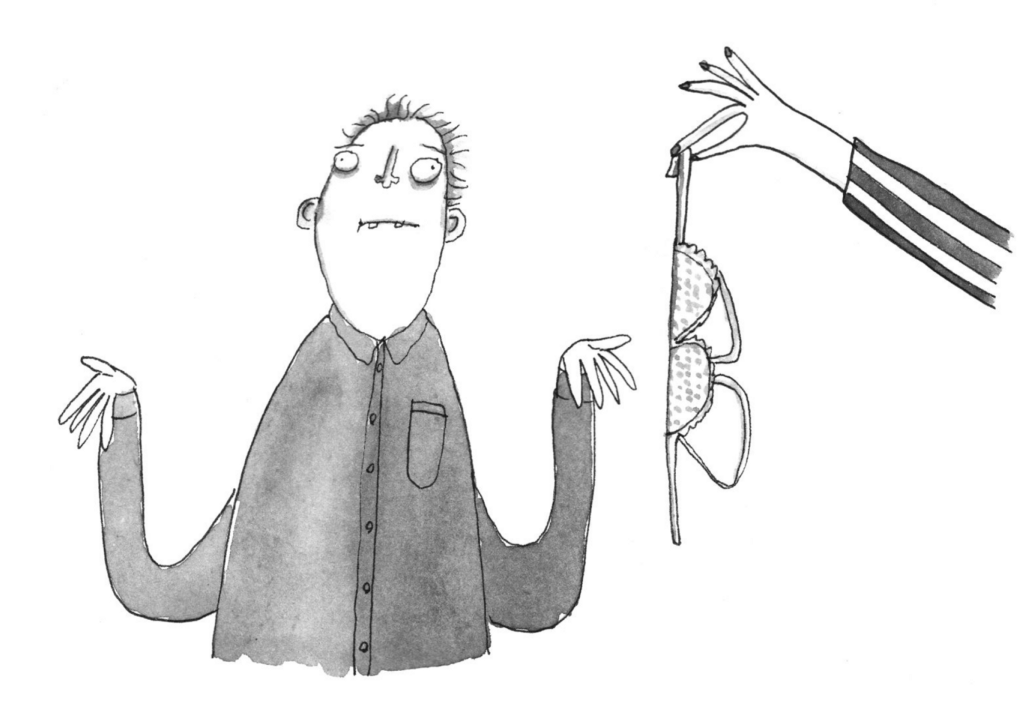
My wife accuses me of cheating all the time. I mean, she’s not wrong. However, I found a novel approach to deal with the accusation. I just pretend to not know what she is talking about! You really have to be committed, though. Seriously, It’s a blanket approach. I pretend to not know many things in other parts of my life. Her whole family thinks i’m dim. I bet I don’t seem so dim when I am able to slime my way out of her many accusations by just saying “um” a lot and soiling myself.
— Dale, Waukegan
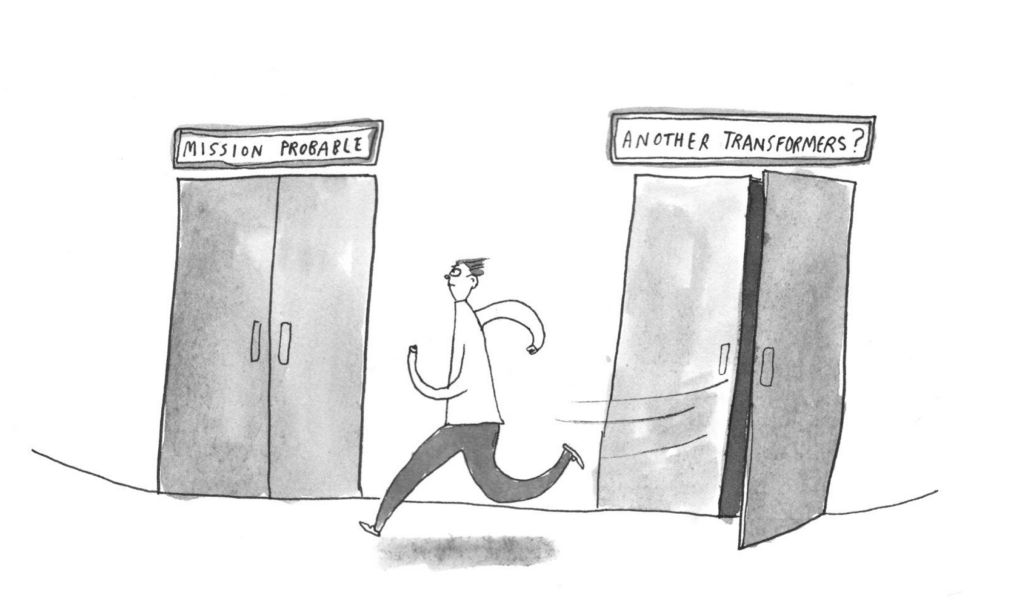
Just having one relationship takes up a lot of time and having a mistress almost doubles that time commitment. For a guy like me, who works a lot and likes his hobbies, it can be a challenge to keep both of these relationships going. I decided a few years ago to try to
do a two-birds-with-one-stone situation. I take my wife and my mistress both out to the same place at the same time. This method has worked for me for years. On Thursdays I take my wife and the mistress out to a movie. The wife drives and I always meet the mistress in the theatre. From there it is a simple matter of getting up to pee and slinking over to the other theatre. After about 6 minutes there, I get up to pee again. Rinse, repeat. I have saved tons of time with this method and with only a few hundred close calls.
— Tyler, Gainesville
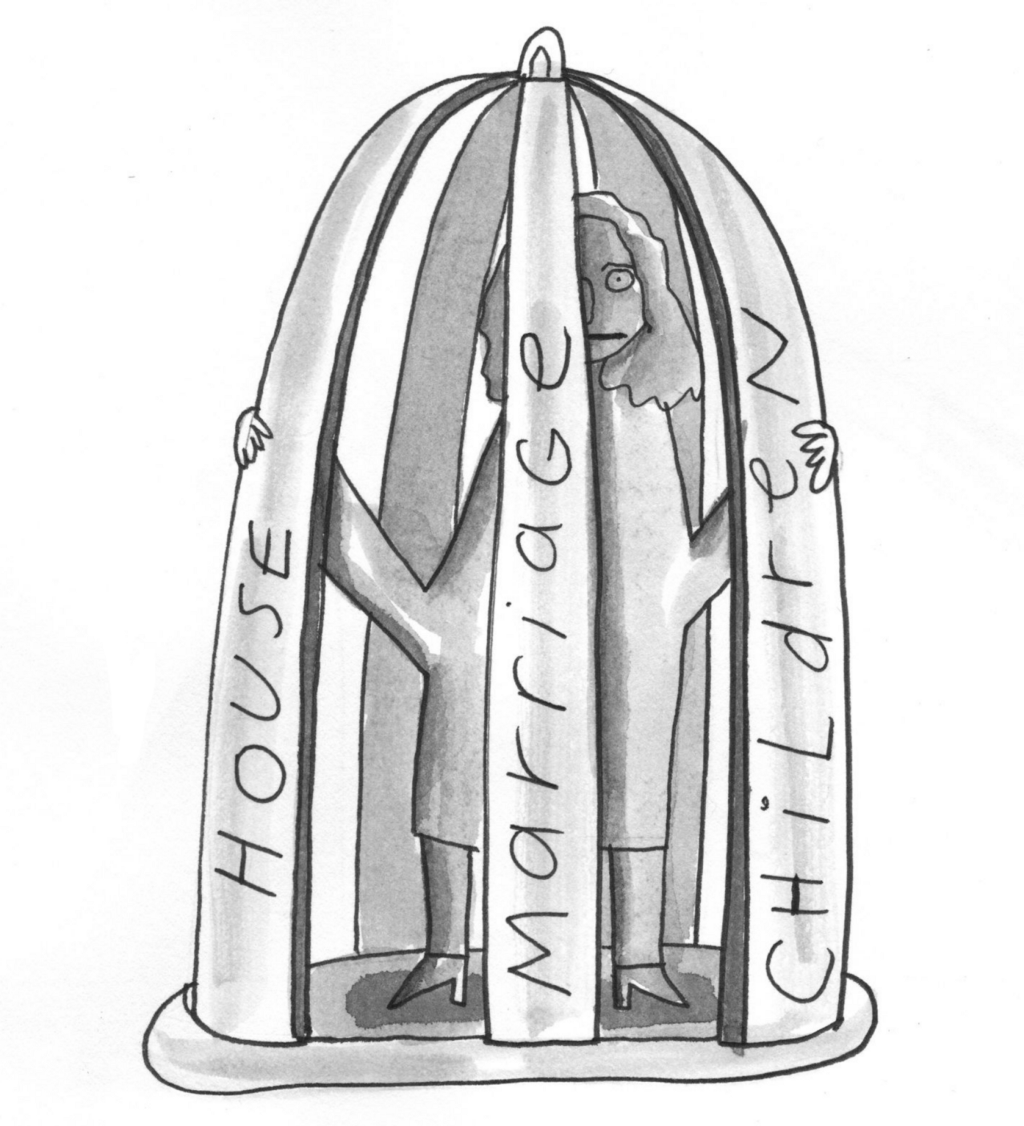
I’m a corporate strategist so I approached my extramarital affair with an eye to the long game. I planned accordingly to have a mistress same as I planned years ahead to embezzle my retirement. Get married, share finances, and most importantly: have kids. Bind yourself to your partner in as many ways as possible so that leaving you presents problems she wants to deal with even less than she wants to deal with your infidelity. Having a mistress takes a lot of responsibility, definitely not for those who shy away from commitment.
— Doug, Atlantic City
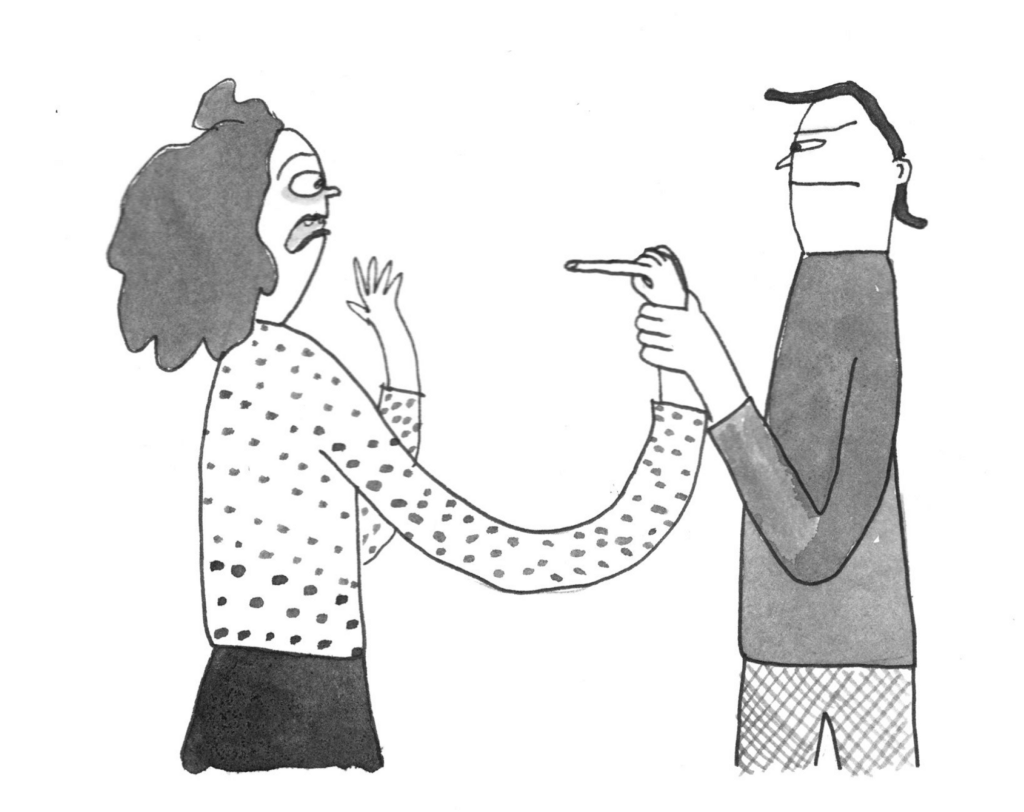
I’m a guy who’s got it figured out. I’ve had the same mistress for eight years and none of my girlfriends have ever found out about her. As soon as a girlfriend starts to suspect something, I accuse HER of cheating. That gives me a few weeks of cushion time to line up a new girlfriend. I’m a total commitment phobe but using this method I’m never in a relationship for longer than six months. And I have had the added benefit of conducting a fulfilling, rich and passionate affair with the same beautiful woman for eight years.
— Eric, Moss Landing
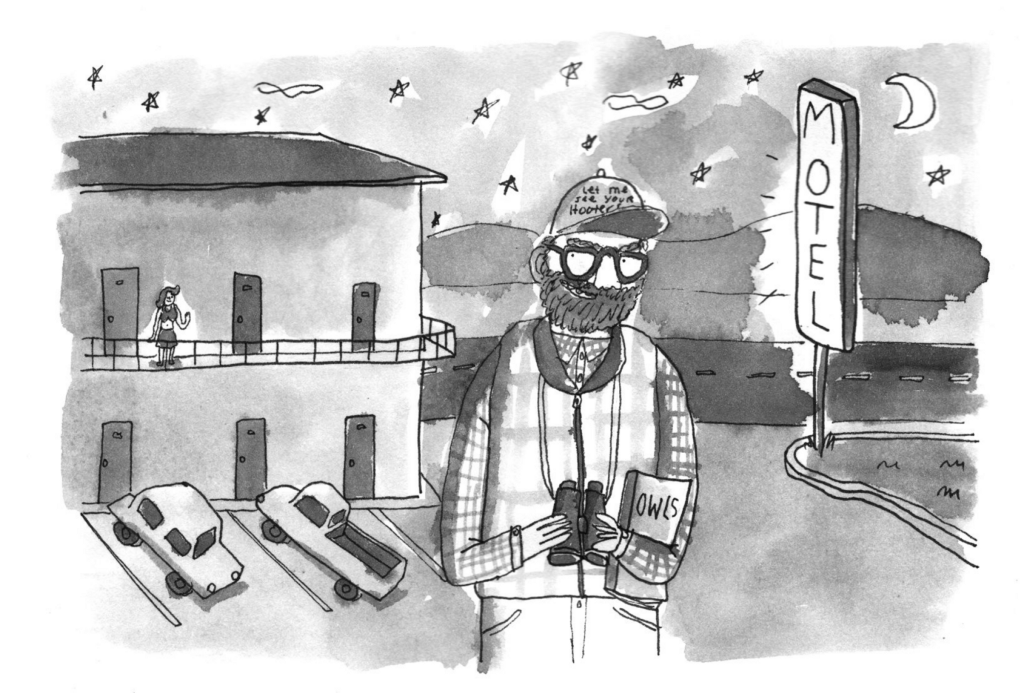
When I first took on a mistress I had a hard time explaining my leaving the house at odd hours, lengthy phone calls, and irregularities in my credit card statements. Fortunately I happened across the solution to my problem about six months ago. My wife was already used to flights of fancy and new hobbies, so it wasn’t a stretch for me to start “owl watching”. I took to it in a zero-to-one-hundred manner. I bought tons of equipment, subscribed to several ornithological magazines, and started talking about owl watching so much that my wife became conditioned to stop listening. Her eyes glaze over before I can say “plumage.” Now I have free rein to leave the house at 11:30 PM and return at 4 AM needing a shower. There’s probably other hobbies that would work for this but you might as well take up owl watching since I’ve already done the work of testing it out for you.
— Ned, Lafayette
The Oh Well Train

No man is an island except a man who lives in Williamsburg because the L train, his lifeline between Manhattan and home and the parties he is just slightly too old to attend in Bushwick, is definitely going to be shut down or at least crippled for many months or even years so there will be no way for him to get to any of those places, requiring that he be almost entirely self-sufficient within his tiny Brooklyn domain for upwards of seven years on weekends, but I guess that isn’t so bad since the Williamsburg Whole Foods is due to open later this year and the Apple Store will not be all that far behind it and wait what am I talking about because that man can and will have his groceries and his iPhone 7 delivered to him by a member of the non-employed-but-independently-contracted servant class — or maybe, if the L train takes that long to come back, by a drone — but wait a minute I totally forgot that because the entire public transit system is so intractably broken that not even the combined fortunes of Bill Gates and Warren Buffett could completely fix it this man will probably opt out of it anyway within the coming months and years through the deeply discounted services of a sixty-billion-dollar logistics company that is slowly building itself into a privatized mass transit company because it would like to monopolize all transit, generally speaking, and at that point why bother spending all that time and money fixing one tunnel under a river which would primarily be utilized by people who don’t even contribute all that much to the app economy — only one Amazon purchase a week, and not a single Instacart delivery! — or the tax base to make up for the tax cuts President Trump put in place for everyone with a net worth of more than a million dollars. What a lonely man that man will be.
Photo by Salim Virji
A Poem by Keith Kopka
by Mark Bibbins, Editor
Ancient Astronaut Theory
My friends’ marriages are failing
in their collective prophecy of a future
where people in love beat the natural
universal order. But isn’t it possible,
asks the omniscient voiceover,
and I’m thinking, sure,
the pyramids were built by aliens,
Adam and Eve were celestial
beings, and all of us are just
stones paving the road to a Mayan
apocalypse. My friend Don believes
he’s good at scratch tickets. I’ve
seen him scrape a whole stick figure
family off the back windshield of a
minivan. We are not alone, the voice-
over says, and the debris left by all
the weddings on Earth forms a comet
of hors d’oeuvres and cocktail
napkins barreling through the
coat check room of our singular
universe. Don declares he’s never
getting married. He’s going to ride
his scratch-off skills all the way
to the state Powerball, buy an RV,
and find the alien settlement of
Branson. I don’t believe he’ll find it,
so its existence doesn’t matter. This
is the circular logic that ignores
your spouse deadbolting the door
when you go out to investigate
the light in the backyard.
Keith Kopka is the Managing Director of the Creative Writing Program at Florida State University. His poetry and criticism have appeared in journals such as Mid-American Review, New Ohio Review, Ninth Letter, The International Journal of The Book, and others.
You will find more poems here. You may contact the editor at poems@theawl.com.
New York City, February 23, 2016

★ The parka seemed like too much till the damp and chilly breeze hit it. The sky was gray and shapeless. Soon enough it was raining and the tourists in the open-topped buses had their ponchos on. Venturing out in it for baked goods led instead a tray of hot stews and rice. A spray of soft brown chunks in the street may have been saturated cardboard, flayed by passing tires. The gusts had more and more bite to them. The price of a short and impossibly slow taxi ride across the bottom of the Park, steep as it was, was merely the price of not being rained on.
